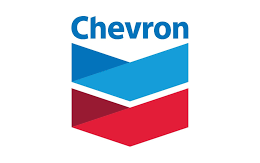by Richard Bernstein, Richard Bernstein Advisors
2023 will likely go down in history as a year of extreme speculation. However, we believe there are once-in-a-generation investment opportunities for 2024 resulting from that overly speculative myopia. If 2023 was the year of speculation, 2024 might be the year of a return to fundamentals.
Equity market performance was dominated by seven stocks (now widely termed the “Magnificent 7”) despite that those stocks’ fundamentals and growth prospects are not at all unique. Individual investors shunned diversified portfolios to trade individual stocks and their risk appetite hit a roughly 20-year high.
Cryptocurrency returns were jaw-dropping during 2023 despite that cryptos have no economic purpose other than to provide a means of speculation or to enable money laundering and illegal money flows. Currencies’ primary role historically has been to facilitate consumption and trade, and it was not until later that they were traded as financial instruments. If cryptos are indeed currencies as some claim, they would be the first currencies in history established without legal economic purpose.
2023’s speculation could make 2024 the beginning of a once-in-a-generation opportunity for investors willing to embrace diversification. The idea that there are only seven growth opportunities throughout the entire global equity market is categorically wrong, and our portfolios are fully embracing the broad range of attractive investments investors appear to be ignoring .
Reviewing 2023
Individual investors embraced risk-taking and shunned diversification during 2023. Charts 1 and 2, courtesy of BofA Global Investment Strategy, highlight private client equity allocations and equity beta.
Private client equity allocations were very conservative at the beginning of the bull market in 2009, but have considerably increased as investors became more confident in the bull market. In 2009, private client equity allocations were 39%, but today they are 60%.
The betas of private client portfolios have also significantly increased since the beginning of the bull market. In 2009, the beta of individuals’ equity portfolios was approximately 0.75, but today it is an aggressive 1.20.
The move toward higher equity allocations AND higher betas reflects a massive increase in risk appetite. At the beginning of the bull market, equity exposure (weight times beta) was 29% (0.75 x 39%). Today, the equity exposure is 72% (1.2 x 60%). Investors’ portfolios are roughly 2.5 times more aggressive today than they were at the beginning of the bull market.


Today’s increased risk appetite exists with a historically narrow market. Investors are rejecting the benefits of diversification and taking more concentrated positions in fewer stocks.
Narrow leadership historically signaled risk within the equity market. Healthy bull markets are typically characterized by broad leadership because a healthy economy benefits many companies. The Magnificent 7 leadership, therefore, implies an unusually dire economic forecast.
Yet, the US economy has been stronger than anticipated, and corporate profits appear to be troughing. Chart 3 shows the Citi US Economic Surprise Index, which measures whether economic data has been better or worse than economists had forecasted. Higher figures indicate more positive surprises. This indicator can be volatile over short periods, but the Economic Surprise Index has been in a meaningful upward trend over the past year, reflecting that the US economy was generally stronger than was forecasted.

Despite the economy’s unexpected health, Chart 4 shows the proportion of stocks within the S&P 500® that outperformed the index is the lowest since the Technology Bubble. A healthier-than-expected economy normally argues for broader market leadership, so the Magnificent 7’s extreme outperformance suggests their rally has been fueled more by speculation than by fundamentals. The market has broadened over the past several months, but the year-to-date data still show an extremely narrow market despite that broadening.

One could understand an extremely narrow market if the economy and corporate profits were in a crisis. Historically, market leadership tends to narrow as the profits cycle decelerates and investors gravitate to the fewer stocks that can provide earnings growth in an increasingly adverse environment. A Darwinistic survival of the fittest dynamic tends to describe performance during decelerating profits cycles.
Although there was a profits recession, the environment was far from dire enough to justify just seven stocks dominating performance. There have been plenty of companies in the global equity markets providing earnings growth.
Chart 5 shows the results of a screen we did searching for companies in the G-7 markets (US, Canada, UK, France, Germany, Italy, and Japan) that are currently forecasted to have earnings growth of 25% or more. 169 companies passed the screen, but only three of the Magnificent 7 made the cut. In addition, the three Magnificent 7 companies that passed the screen ranked only 52nd, 159th, and 162nd.

A call for maximum diversification
Momentum investing tends to be very alluring, but few investors can predict when momentum-based rallies will end. It is exactly that uncertainty that calls for maximum diversification from today’s narrow market.
The prospect that AI will change the economy is shaping investors’ opinions today. Such contentions are similar to the Technology Bubble’s “new economy.” Although the internet did indeed change the economy, technology stocks’ high valuations and unrealistic profit forecasts resulted in extraordinarily poor returns and the so-called “Lost Decade” in equities.
Charts 6 and 7 show how extreme performance reversed after the Technology Bubble. Chart 6 shows a comparison between the NASDAQ Composite, the Russell 2000 Value Index, and the MSCI Emerging Markets Index. NASDAQ lost about 50% during the decade, but both small value and emerging markets more than doubled!

Chart 7 shows US sector performance during the Lost Decade. Sectors that did exceptionally well during the bubble, Technology and Communication Services, more than halved during the subsequent decade. However, many other sectors, such as Energy, Consumer Staples, and Materials, were up substantially.

Our “4 for ‘24” theme is largely based on a potential replay of the 2000’s Lost Decade. We envision an extended period during which the Magnificent 7 significantly underperform, but other sectors, industries, countries, and investment themes that are currently being ignored could present excellent opportunities.
4 for ‘24
With this backdrop, our portfolios enter 2024 with four embedded themes:
-
US Small Caps
-
US Cyclicals
-
Non-US and Emerging Markets
-
Industrials: Deglobalization spurs infrastructure
US small caps
The profits cycle has begun to recover and seems poised to accelerate until at least mid-2024. Chart 8 shows the S&P 500® profits cycle with our forecast for 2024.

Investors tend to forget the basic fact that the profits cycle is determined by cyclicals. If profits are accelerating or decelerating, it is typically attributable to cyclical companies’ earnings because stable companies’ earnings are simply too stable to cause a cycle.
Smaller capitalization stocks are more cyclical than are larger capitalization stocks and tend to outperform when profits accelerate. Chart 9 compares the performance of the S&P 500® and the Ibbotson Small Cap Index during periods in which profits were accelerating over the past 50 years. The median small cap performance when profits accelerate is 29% versus 17% for the large caps, and small caps outperformed large caps during 13 of 17 periods of profits acceleration.
More important, the range of small cap outperformance is skewed positively when profits accelerate. The worst historical outcomes for small and large caps are very close, but upside potential when the profits cycle accelerates tends to be much greater with smaller cap stocks.

US Cyclicals
Because cyclicals (lower quality companies) determine the cycle and because it appears profits are going to accelerate, our portfolios are overweight many cyclical sectors. We are presently overweight Energy, Materials, and Industrials sectors. Lower quality/more cyclical equities tend to outperform when profits accelerate because of their extreme earnings variability, and we currently have about a 56% low quality tilt in the equity portion for our portfolios versus just 48% for the MSCI ACWI index.
Chart 10 shows performance by quality during periods when profits accelerate. Historically, lower quality companies have outperformed higher quality companies 75% of the time during accelerating profits periods and that performance has been nearly monotonic from lowest quality to highest.

The latest Merrill Lynch Global Fund Manager Survey also highlights that few portfolios are positioned for profits to rebound. Fund managers are underweight Energy, Materials, and Industrials relative to their “normal” portfolio weight (See Chart 11).

Non-US and Emerging Markets
Politics can have a meaningful impact on longer-term country returns (i.e., wars), but less frequently affect shorter-term cyclical returns which are mainly a function of general economic and profits fundamentals.
When the US bull market began in 2009, investors were enamored with non-US, particularly emerging market, stocks. Fourteen years later, the opposite is true and investors strongly favor US stocks. Fundamentals and sentiment though increasingly favor non-US stocks, and we have roughly our lowest US equity allocation in the history of our firm.
Perhaps the most extreme example of investors overlooking fundamentals is China. One of RBA’s core beliefs is equities respond to profits cycles rather than economic cycles, and China’s profits cycle has troughed. Chart 12 shows that China’s profits cycle began to accelerate in mid 2022 and RBA has been overweight China in our portfolios since the trough.

China has not performed well during 2023 despite improving fundamental for two probable reasons. First, China is not part of the Magnificent 7, and the Magnificent 7 effect has sucked capital away from other investments. Second, the politics surrounding China/US relations has made foreign investors wary of investing in China.
There are indeed many uncertainties currently surrounding China, but Chinese equities have not been revalued upward over the past several years as have other global equities (Chart 13), and the MSCI China Index now sells at a 40% discount to the MSCI ACWI Index. It seems clear those uncertainties are discounted into present valuations.

Industrial infrastructure for the long-term
We think contracting globalization is a much overlooked longer-term investment theme. Globalization was perhaps the primary reason the US experienced secular disinflation and secularly falling interest rates. It seems likely that secular disinflation could reverse as globalization contracts.
Inflation is a rather easy concept. Prices go up when demand is greater than supply, and inflation simply reflects demand being greater than supply for an extended period. Factors such as monetary or fiscal stimulus might boost demand and factors such as supply disruptions might hinder available supply, but inflation is sustainable only if demand is greater than supply.
Within this context, globalization was highly disinflationary because supply and competition kept increasing as countries were opened to foreign production and trade. American consumers had access to better quality goods at cheaper prices.
The US increasingly ran a trade deficit as globalization expanded, and that wasn’t really an issue so long as globalization did indeed continue to expand. However, globalization is starting to contract, trade uncertainty is increasing, and the US trade deficit indicates the US is dependent on the rest of the world for virtually everything (Chart 14).
Investors understand the national security implications of being dependent on the world for semiconductors, but somehow don’t understand the national security issues of being dependent on the rest of the world for everything!
A potential measure of contracting globalization is the number of wars and battles going on around the world. Chart 15 shows the number of armed conflicts around the world has hit an unfortunate 30-year high.


It may be critical for the US economy to rebuild its productive infrastructure as globalization continues to contract. Some have called this reshoring, rebuilding the American capital stock, or infrastructure, but we think subthemes like energy infrastructure, utility infrastructure, private sector manufacturing infrastructure, and related real estate, ports, roadways, and rail are as important to the future of the US economy as AI might be. However, when compared to AI, few investors are paying as much attention to this theme, which suggests greater opportunity.
Despite many investors ignoring the theme in favor of sexier technology-oriented investments, small and mid-cap capital goods companies have been performing quite well for a long time. The well-known Ark Innovation Fund (ARKK) is the bellwether fund for investments in technology, innovation, and disruption. It came public in October 2014, more than 9 years ago.
Since October 2014, small and mid-cap capital goods companies have outperformed ARKK by almost 200 basis points/year. The markets have caught on to the industrial infrastructure theme long before it has caught the average investor’s attention.

2024: Once-in-a-generation opportunity
RBA’s portfolios have typically been diversifiers within an overall portfolio. That role today seems a very good one to play.
The speculative rally in the equity markets in 2023 is giving rise to what we think will be a once-in-a-generation investment opportunity in 2024. Like the opportunities after the Technology Bubble, there seem to be plenty of attractive investments. They just aren’t in the seven stocks that are investors’ favorites.

INDEX DESCRIPTIONS: The following descriptions, while believed to be accurate, are in some cases abbreviated versions of more detailed or comprehensive definitions available from the sponsors or originators of the respective indices. Anyone interested in such further details is free to consult each such sponsor’s or originator’s website. The past performance of an index is not a guarantee of future results. Each index reflects an unmanaged universe of securities without any deduction for advisory fees or other expenses that would reduce actual returns, as well as the reinvestment of all income and dividends. An actual investment in the securities included in the index would require an investor to incur transaction costs, which would lower the performance results. Indices are not actively managed and investors cannot invest directly in the indices. S&P 500®: S&P 500® Index: The S&P 500® Index is an unmanaged, capitalization-weighted index designed to measure the performance of the broad US economy through changes in the aggregate market value of 500 stocks representing all major industries.Sector/Industries: Sector/industry references in this report are in accordance with the Global Industry Classification Standard (GICS®) developed by MSCI Barra and S&P Global.S&P Small Cap Capital Goods : S&P Global's Smallcap Capital Goods Index is a capitalization-weighted index. The index was developed with a base level of 100 as of December 31, 1990.The parent index is MIDL2. This is a GICS Level 2 Industry group.S&P Mid Cap Industrials: S&P Global's Midcap Capital Goods Index is a capitalization-weighted index. The index was developed with a base level of 100 as of December 31, 1990. This is a GICS Level 2 Industry group.ARK Innovation ETF (ARKK): The ARK Innovation ETF is an actively managed exchange-traded fund incorporated in the USA. The Fund will invest in equity securities of companies relevant to the theme of disruptive innovation. Relevant themes are those that rely on or benefit from the development of new products or services in scientific research relating to Genomics Revolution, Web x.0, and Industrial Innovation.Large Stocks: The SBBI® Large Company Stock Index is represented by the S&P 500® Index: The S&P 500® Index is an unmanaged, capitalization-weighted index designed to measure the performance of the broad US economy through changes in the aggregate market value of 500 stocks representing all major industries. Small Stocks: The SBBI® Small Company Index: From 1926 to 1981 are composed of stocks making up the fifth quintile (ninth and 10th deciles) of the NYSE by market capitalization. From 1981 thru March 2001 the series is comprised of the DFA U.S. Small Company 9-10 (ninth and tenth deciles) Portfolio. From April 2001-current, the series is represented by the DFA U.S. Micro Cap Portfolio. For more detail see the current SBBI® Yearbook’s description of the basic series.Quality: Quality returns are based on the The BofA Quality indices. The BofA Quality indices utilize all of the stocks in the BofA US research coverage universe and are grouped monthly based on their Standard and Poor’s quality ranking from A+ (highest) through C&D(lowest). The returns shown are calculated based on the subsequent months’ average price return of each group assuming monthly rebalancing.













